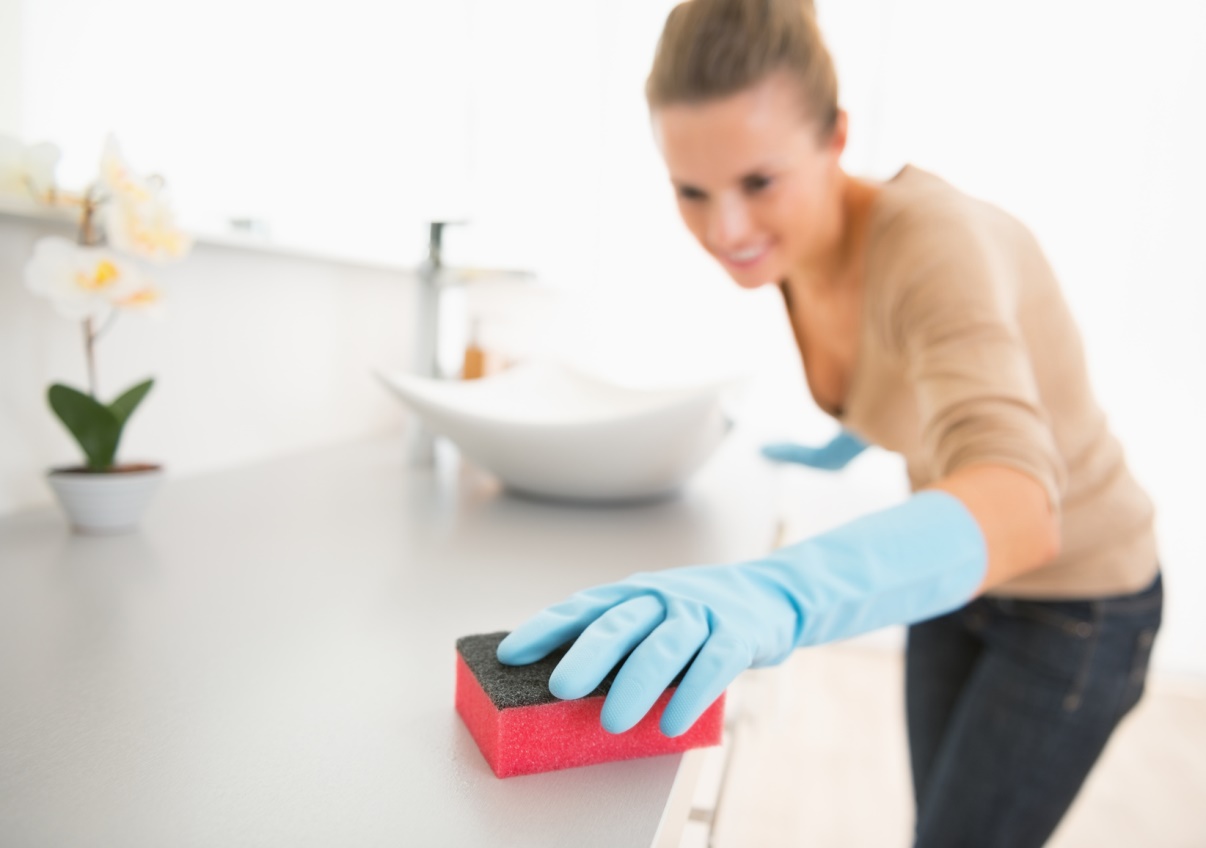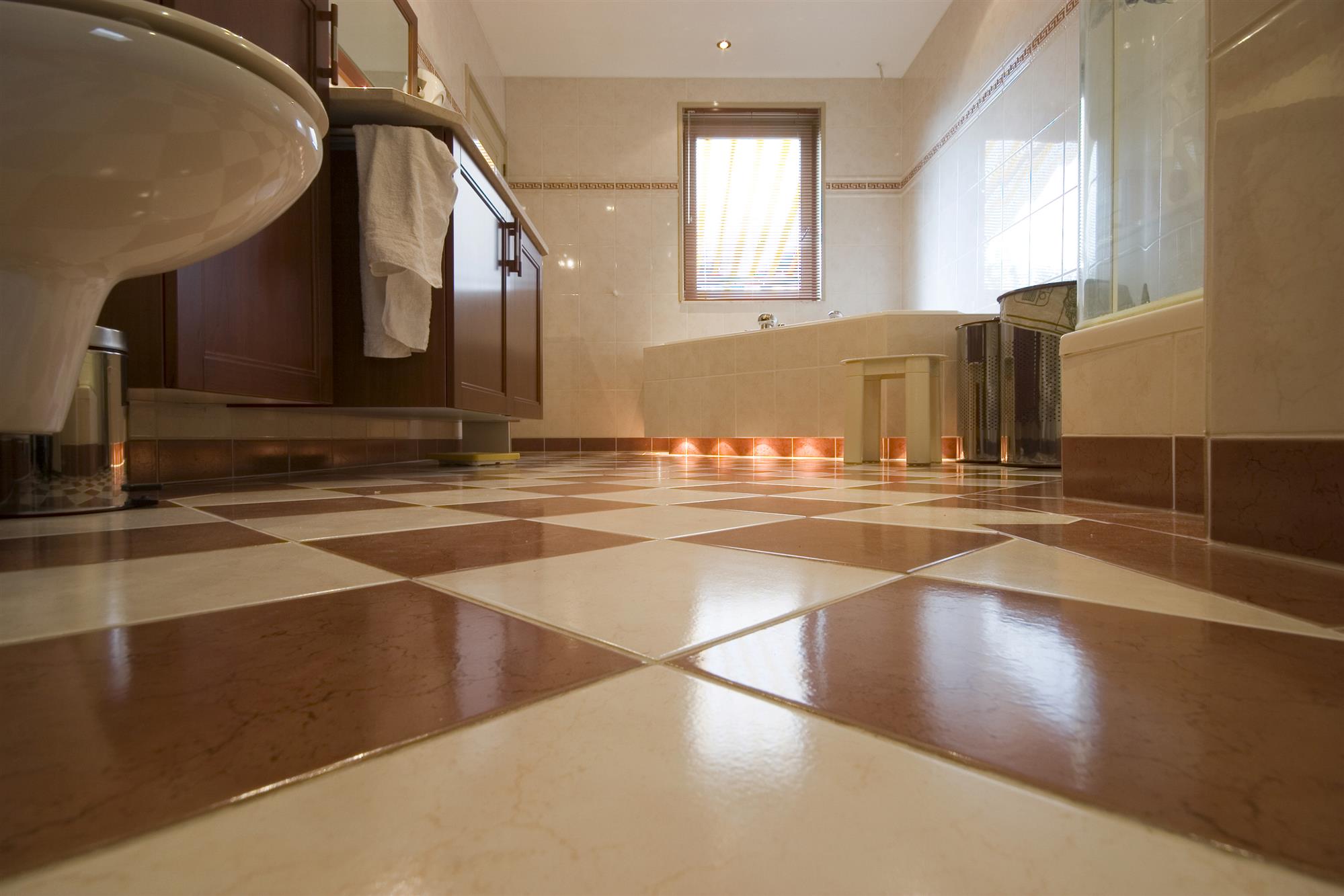You’ve been putting it off for weeks—maybe even months: the dreaded chore of deep cleaning the bathroom. Meanwhile, the bathtub has gotten grimier, the sink ickier, and, well, we won’t even talk about what’s behind the toilet bowl. Deep cleaning your bathroom requires some “elbow grease”—your back and shoulders will definitely get a workout. If you can’t do a deep cleaning yourself because you’re too busy, you have physical limitations, or you simply don’t like doing it, hiring a maid service for house cleaning help is an ideal solution, especially for more physically demanding tasks like scrubbing the shower/bathtub, and interior and exterior window cleaning. Keeping your bathroom(s) spic and span is important not only for appearance’s sake, but also to keep nasty germs at bay. Here’s the deal: Our environment (and our bodies) are covered in germs—from single-celled bacteria, to viruses, to fungi and protozoa. Trying to get rid of germs is an effort in futility, and we wouldn’t want to eliminate them all, in any case, since most of these microscopic hitchhikers are harmless and can even help keep us healthy. While the majority of germs pose no risk to our health, there are some bad apples that can make us sick, like E. coli and Staph aureus. It’s these tiny troublemakers we need to avoid. Ahead we’ll explore tricks for easier cleaning without endless scrubbing, and we’ll look at how to make your own germ-killing, non-toxic cleaners using ingredients found right in your kitchen. First, let’s talk germs. The “Bad Bugs” That Could Be Lurking in Your Bathroom Only 1-2% of germs are pathogenic (meaning they can make us sick), but we still need to be cautious of them. Here are some bugs that could be making a cozy home in your bathroom: The good news is that regular cleaning and good hygiene habits keep your risk of contracting these bacterial, fungal, and viral infections low. Before we get started with cleaning tips, let’s look at the supplies you’ll need. Deep Cleaning Supply List You can effectively clean and kill germs using natural products. Parents who have kids with asthma, allergies, or other sensitivities already know the advantages of using non-toxic products to avoid triggering wheezing, skin reactions, and other problems. If you’ve ever read the labels on the side of commercial-grade cleaning products, there’s typically a laundry list of potential dangers, including eye, respiratory, and skin irritation. There’s no doubt these cleaners are powerful germ and grime killers, and they may very well be necessary if your bathroom has been neglected and you need to bring out the big guns. If not, the natural stuff will probably do the job. Here are some natural options for cleaning: If making natural cleaners isn’t your thing, there are plenty of non-toxic cleaners made from plant-derived cleaning agents, like Seventh Generation products, available at your local retailers. Okay, now that we’ve covered the supplies you’ll need and explored how to make your own natural cleaning products, let’s get down to the nitty gritty with some cleaning tips and tricks. A solution of one part non-toxic dishwashing detergent and vinegar is excellent for getting rid of soap scum. Apply and use a scouring pad to work off the grime. Using a steam cleaner beforehand will make scrubbing easier. If you don’t have a steam cleaner, running the shower for one minute using hot water will have a similar effect. A paste of baking soda and lemon juice is good for scrubbing the shower pan/bathtub. If you have doors on your shower rather than a shower curtain, it’s likely you have at least some mold build-up in the cracks and crevices of the doors—a toothbrush will come in handy here. Your shower head makes an ideal home for bacteria, and mineral build up can clog the sprayers. To clean and disinfect the shower head, put a small amount of equal parts water and vinegar into a plastic bag and secure it around the shower head with a rubber band. Leave it on overnight, remove, and run the water to clear it out. If you have a shower curtain, toss it along with the plastic liner (if applicable) right into the washing machine on a warm water setting. If the outer shower curtain is fabric, you should be able to dry it in the dryer on a low heat setting. Meanwhile, hang the plastic curtain back up to dry completely. You’ll be amazed at how well the washing machine cleans the curtain and liner. Scrubbing down walls isn’t typically part of the cleaning routine for most of us, but bathrooms are one place where it’s needed, since bathroom walls can easily collect residue from frequent heat/steam. If you’re noticing strange yellow-tinged droplets on your walls and ceiling, this is an indication that you need to improve the ventilation in your bathroom. Moisture and humidity cause beads of water to condense and stick to the walls, trapping dirt and other contaminants in the process. To eliminate this problem, make a habit of open a window after showering. If your bathroom has no windows, make sure you have an operable exhaust fan, and run it during and after bathroom use until surfaces are completely dry. To scrub walls clean, use a 1:1 solution of water-vinegar, or, alternatively, hydrogen peroxide in a spray bottle, and wipe down with a cleaning cloth. It’s amazing how much dust can collect on the inside of medicine and storage cabinets. Removing everything from the cabinets and wiping down shelves is one of those annoyingly time-consuming chores, but it’s worth it, since it also gives you the opportunity to purge old toiletries, medications, and other products in the process. Learn how/where to dispose of old medications and partially used toiletries. “I love cleaning the toilet,” said no one ever, but, alas, it must be done. A steam cleaner is great for killing germs in and around the toilet. If you don’t have a steam cleaner, use a toothbrush with a 1:1 water/vinegar solution and baking soda/lemon juice paste to clean inside the bowl. Spray a vinegar/water solution on the base, outer bowl and tank, toilet seat and lid, and wipe down with a rag/cleaning cloth for a squeaky clean, disinfected toilet, inside and out. Cleaning countertops is pretty straightforward … unless you have a tile countertop with moldy grout. To get grout clean, mix 3% hydrogen peroxide and water (1:1 ratio) in a spray bottle. Spray the grout until it’s completely saturated, and wait an hour. Scrub grout with a toothbrush, rinse well, and wipe dry. Most countertops (granite, tile, Formica, etc.) will come clean with a vinegar and water solution. A baking soda/lemon juice paste will help remove soap scum from the sink. Spray the faucet with a vinegar/water solution and wipe down. If your faucet is scummy/moldy, use the same trick we describedearlier for the shower head. Streaks are so annoying. Thankfully, either white vinegar or hydrogen peroxide (3%) does a great job of getting mirrors and windows clean with no streaks. Use newspaper or a microfiber cloth for best results. A vinegar/water solution works well to clean windowsills. Floor You’re almost done! It makes sense to clean the floor last, since you’ll be walking through your bathroom to clean other areas, and water will inevitably drip onto the floor. Remove everything from the floor, including area rugs, the wastebasket and magazine rack, etc. Next, sweep or vacuum the floors to remove debris. If you have tile floors, a steam cleaner is ideal to get the tile and grout clean and disinfected, and for cleaning around the base boards and behind the toilet. If you don’t have a steam cleaner, dunk microfiber cloth into a bucket of warm water and vinegar, and wipe along baseboards. Wash down the floors with the same vinegar/water solution, whether you do it the old fashioned way (on hands and knees) or with a mop. We hope our guide to deep cleaning your bathroom has been helpful and fun to read. If you’d prefer to leave your next deep cleaning in the hands of a pro, the expert house cleaners at 2 Local Gals can help—contact us today to schedule a visit. If you’d prefer to leave your next deep cleaning in the hands of a pro, the expert house cleaners at 2 Local Gals can help — contact us today to schedule a visit.
DO YOU HAVE ANY TIPS FOR CLEANING MY BATHROOM?
How to Deep Clean Your Bathroom Like a Pro


Natural Alternatives to Harsh Cleaning Products

DIY Recipes for Non-Toxic, Eco-Friendly Cleaners
Turn up the tunes, grab your cleaning supplies, and let’s get started!
Shower/Bathtub
Walls
Medicine/Storage Cabinets
Toilet

Counter/Sink/Faucet

Mirrors/Windows/Windowsills

